Celebrating Africa's aid workers on the frontline
- Published
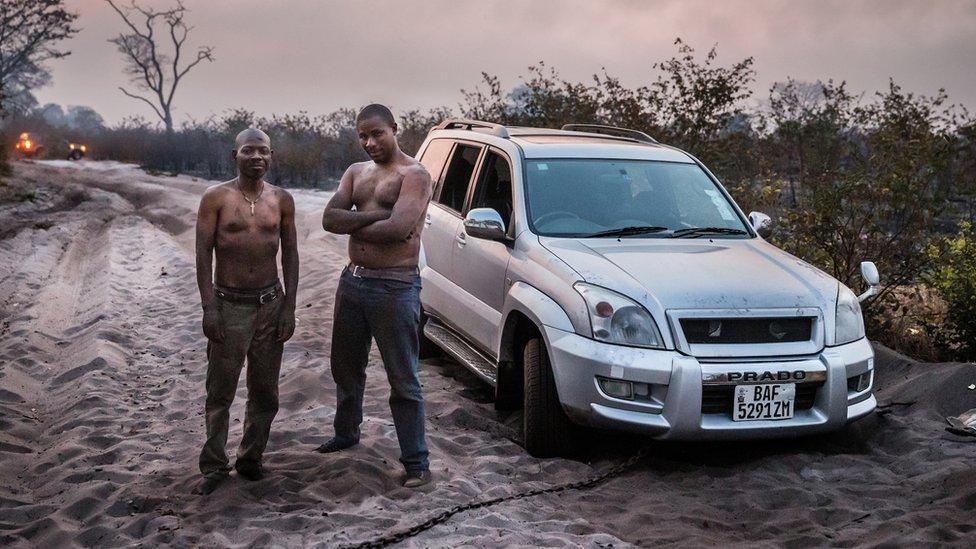
Aid worker Robert Ntitima (R) and his driver Clinton Bakala pictured after beating back a bush fire
Life on the humanitarian frontline is not as you know it, says former BBC journalist Mark Doyle, who now works in the aid sector and gives his personal view on the job done by aid workers in Zambia.
The men in the photo above may not conform to the classic image of aid workers in Africa.
A more traditional shots would show a nurse caring for a sick child - and the nurse would quite likely be a visiting European.
But the vast majority of people who run aid projects on the continent are in fact Africans.
And a huge amount of their time is necessarily devoted to confronting the difficulties of delivering assistance in remote places with poor roads or flooded tracks.
Fighting fires
Team leader Robert Ntitima was nearing the end of a 700km (435 mile) journey from the Zambian capital, Lusaka, to the village of Malumba in the far west of the country.
He was taking an eye surgeon to operate on patients facing blindness when his car got stuck in a sand drift. As night began to fall, a fire started by a farmer to clear the bush swept towards the vehicle.

You may also be interested in:

The flames threatened to ignite the fuel tank and blow up the car.
Mr Ntitima and driver Clinton Bakala had no choice but to beat back the fire with sticks before using their bare hands to dig out the two-tonne vehicle.
A chain and another four-wheel drive were then used to finally pull the car free.
Birthday promise
Relieved to be out of the sand, Mr Ntitima nevertheless paused to ring his family before setting off again.
It was the birthday of his four-year-old daughter, Sally Mika. He promised they would have her party when he eventually got home.
It had been a typical day for the aid workers in western Zambia.
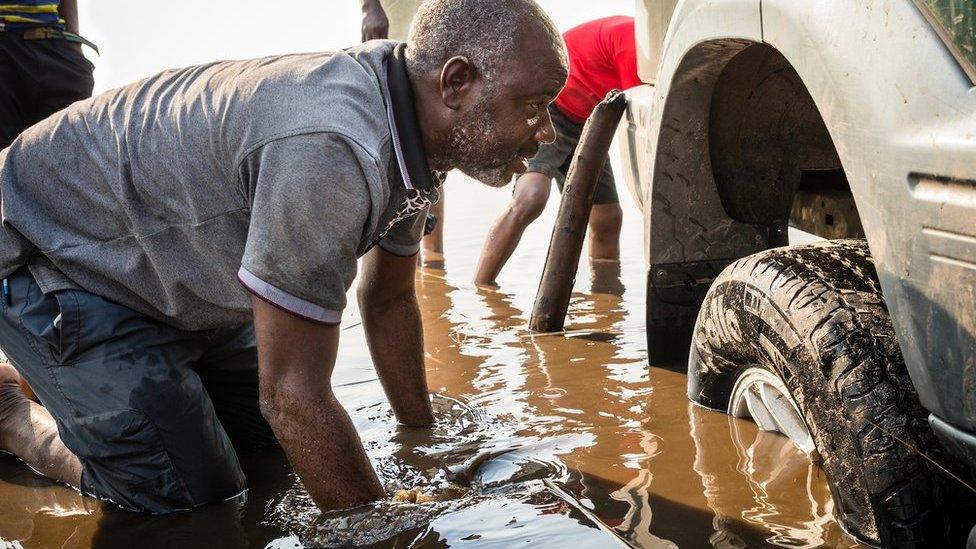
Eye surgeon Bruno Kandei is used to getting his car out of the mud when trying to get to rural areas
Earlier, the car carrying the eye surgeon, Bruno Kandei, got bogged down on a flooded stretch of road.
Dr Kandei is a specialist in correcting blinding trachoma, the leading cause of preventable blindness in the world.
He is currently working on behalf of international charity Sightsavers. In addition to his surgical skills, he has to be an expert in getting cars out of floods.
"Bruno" is a nickname. His 1980s boyhood friends borrowed it from their expat British schoolteacher in the western Zambian town of Kalabo. The boy and Bruno the teacher were both keen football players. The name "Bruno" stuck with the Zambian.

Dr Kandei's real first name is "Kubona".
"In my language 'Kubona' translates into English as 'the ability to see,'" Dr Kandei, 53, explained.
"Maybe my name was the Lord's way of showing me I should help cure blindness."
After a two-day journey, team leader Mr Ntitima and Dr Kandei finally reached the small rural clinic where their patients were waiting.
The cars carrying the dozen or so patients had also got stuck on rough tracks several times. But now everyone was in the right place for the surgery to take place.
'Scratch, scratch, scratch'
Latest figures show that nearly 158 million people worldwide are at risk from blinding trachoma, external, a disease caused by infection of the eye.
Around half of these have been treated with antibiotics, but much work remains to be done.
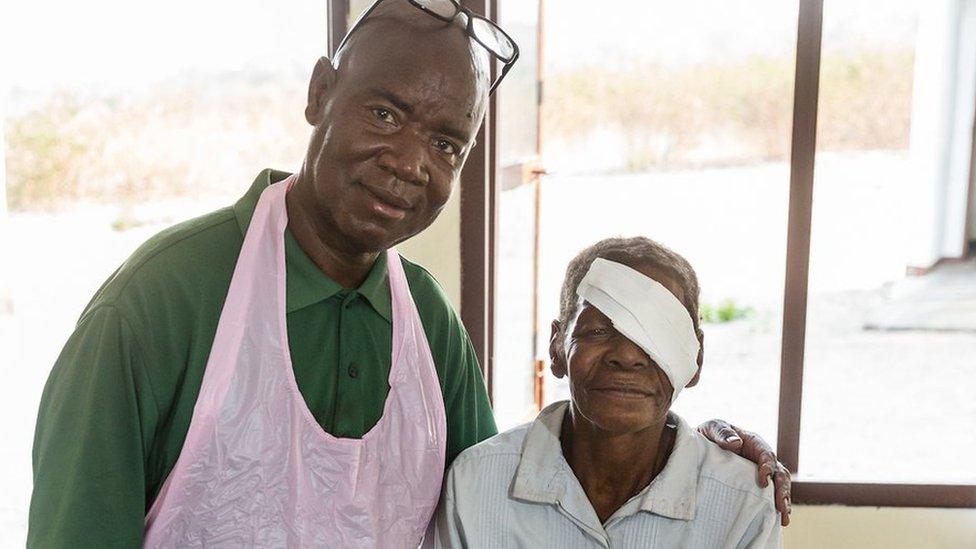
Sibeso Simate (R) says trachoma is like having small spears scratching your eyes all day long
Blinding trachoma is one of the so-called neglected tropical diseases, most of which affect very poor communities. Other examples are guinea worm, external and sleeping sickness, external. They attract minimal attention because their impact does not generate an immediate medical emergency as is usually the case, for example, with Ebola disease.
In many older people blinding trachoma, if untreated, causes in-growing eyelashes. The lashes scratch the eye, causing great pain and, ultimately, blindness.
The infection thrives in very poor communities without access to a reliable supply of clean water, or toilets.

What is trachoma?

Trachoma is the leading infectious cause of blindness worldwide
It is caused by infection from bacteria called Chlamydia trachomatis
Symptoms include blurred vision, eye pain and itchiness in the eye
Infection spreads through contact with eye and nose discharge of infected people - via hands, towels, clothes and also flies
Treatment includes antibiotics or eye surgery, while prevention is possible with access to water and sanitation to keep the face clean
Blindness from trachoma is irreversible

"It's like having small spears scratching your eyes all day long," said Sibeso Simate, 72, who was waiting for her operation at the rural clinic in western Zambia.
"They scratch every time you blink," the mother of two said. "Scratch, scratch, scratch, scratch."
The surgery is a relatively simple operation that takes about 20 minutes. It involves rotating the infected eyelid back to its correct position so the eyelashes are no longer scratching the eye.
With just a local anaesthetic being used, Ms Simate was happily chatting with her surgeon throughout the procedure.
No electric lights
Dr Kandei carried out half a dozen similar operations in the rural clinic before the fading light forced him to stop.
Conditions there were very basic - there was no electric light.
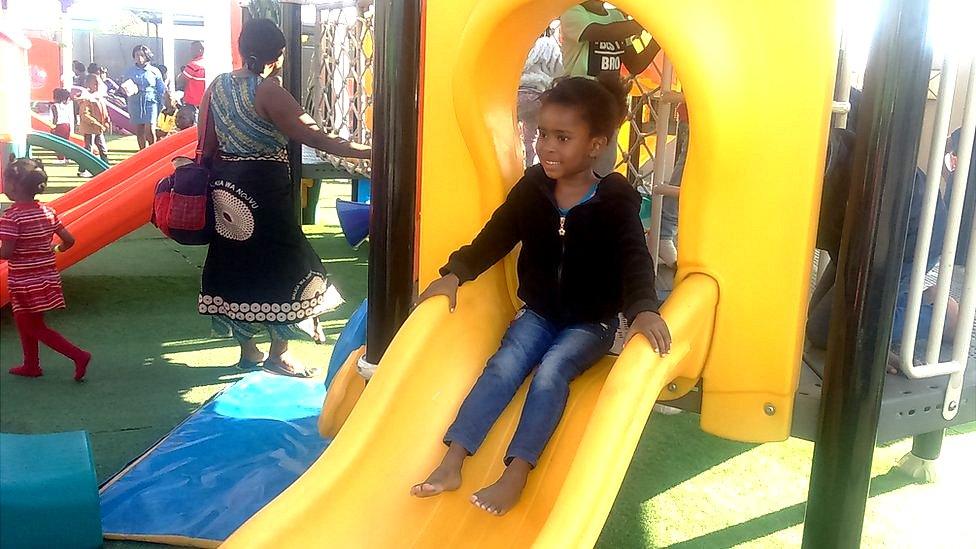
Team leader Robert Ntitima made it home in time for his daughter's birthday
He and his colleagues travel to rural areas for a fortnight every two months to reach patients who cannot make it to hospitals in the larger towns.
Mr Ntitima made it back home to Lusaka safely.
His daughter Sally Mika had her wish for a birthday party come true - complete with cake and candles.
She also had an extra treat - a visit to an adventure playground.
- Published12 March 2018

- Published28 January 2018
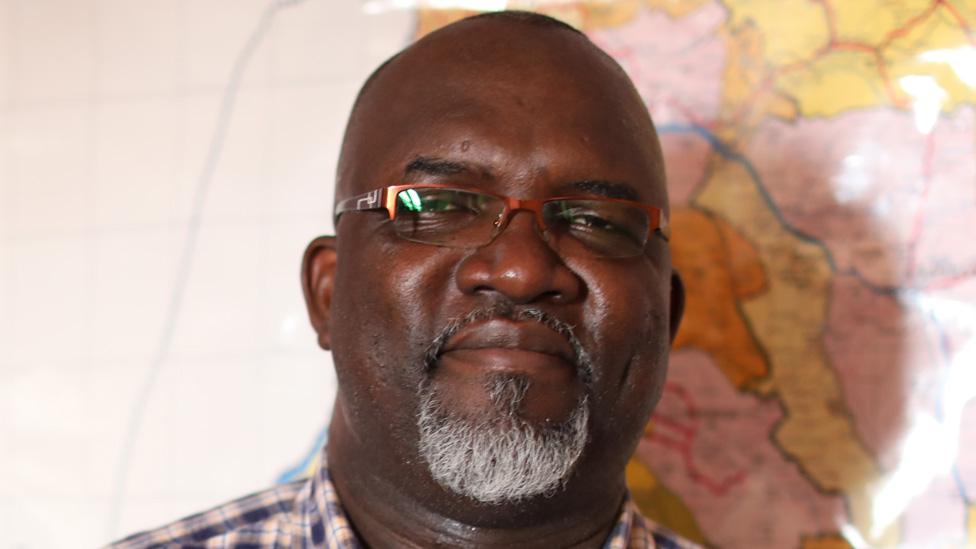
- Published26 May 2018
